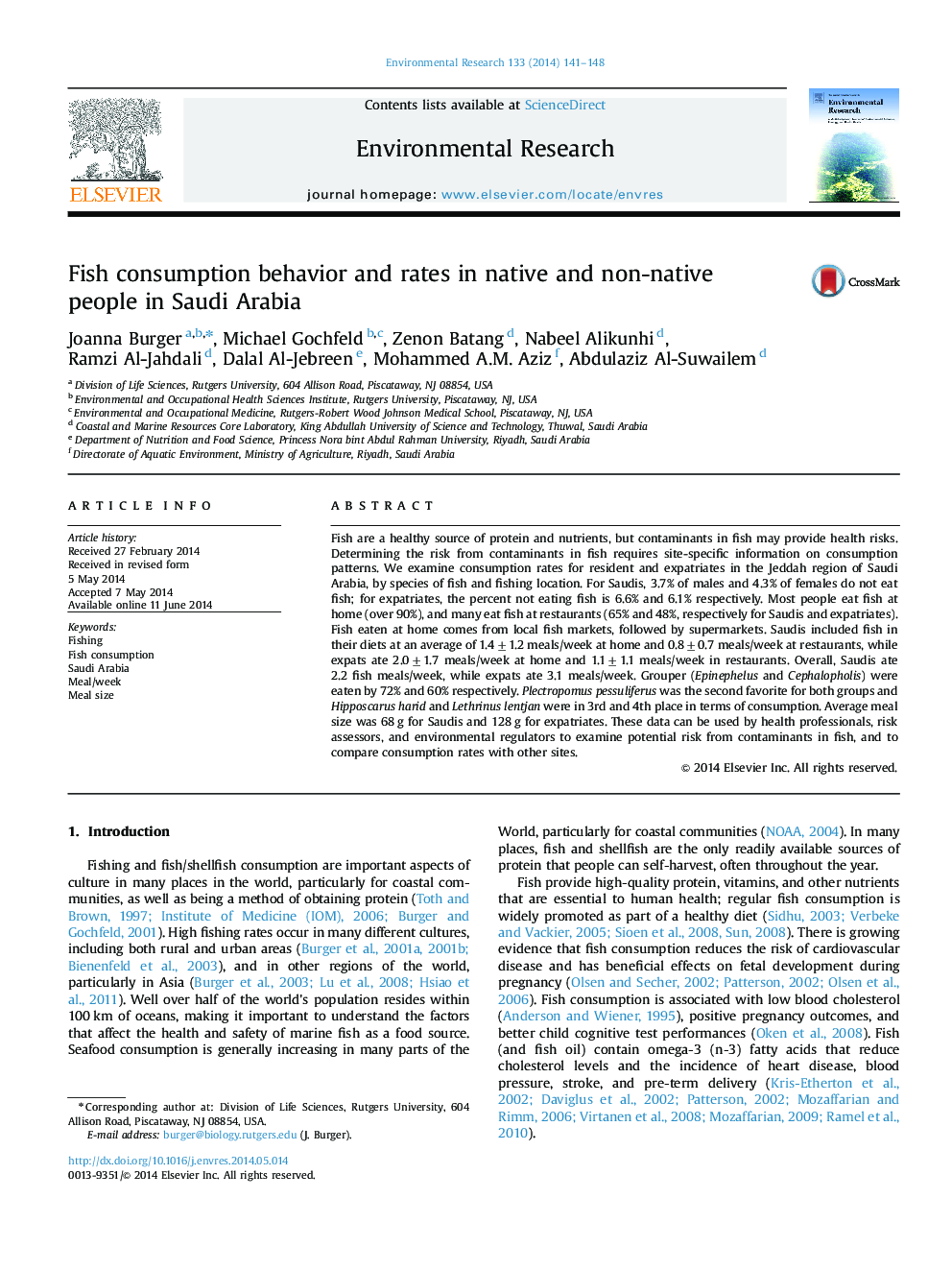| کد مقاله | کد نشریه | سال انتشار | مقاله انگلیسی | نسخه تمام متن |
|---|---|---|---|---|
| 4469729 | 1622568 | 2014 | 8 صفحه PDF | دانلود رایگان |
• This study examined fish consumption rates in native Saudi Arabians and expatriates.
• Most fish came from local fish markets, followed by supermarkets.
• 3.7 % of male and 4.3 % of female Saudi Arabians did not eat fish.
• Saudis ate 2.2 fish meals/week, while expatriates ate 3.1 meals/week.
• Average of mean meal sizes was 68 g for Saudis and 128 g for expatriates.
Fish are a healthy source of protein and nutrients, but contaminants in fish may provide health risks. Determining the risk from contaminants in fish requires site-specific information on consumption patterns. We examine consumption rates for resident and expatriates in the Jeddah region of Saudi Arabia, by species of fish and fishing location. For Saudis, 3.7% of males and 4.3% of females do not eat fish; for expatriates, the percent not eating fish is 6.6% and 6.1% respectively. Most people eat fish at home (over 90%), and many eat fish at restaurants (65% and 48%, respectively for Saudis and expatriates). Fish eaten at home comes from local fish markets, followed by supermarkets. Saudis included fish in their diets at an average of 1.4±1.2 meals/week at home and 0.8±0.7 meals/week at restaurants, while expats ate 2.0±1.7 meals/week at home and 1.1±1.1 meals/week in restaurants. Overall, Saudis ate 2.2 fish meals/week, while expats ate 3.1 meals/week. Grouper (Epinephelus and Cephalopholis) were eaten by 72% and 60% respectively. Plectropomus pessuliferus was the second favorite for both groups and Hipposcarus harid and Lethrinus lentjan were in 3rd and 4th place in terms of consumption. Average meal size was 68 g for Saudis and 128 g for expatriates. These data can be used by health professionals, risk assessors, and environmental regulators to examine potential risk from contaminants in fish, and to compare consumption rates with other sites.
Journal: Environmental Research - Volume 133, August 2014, Pages 141–148
